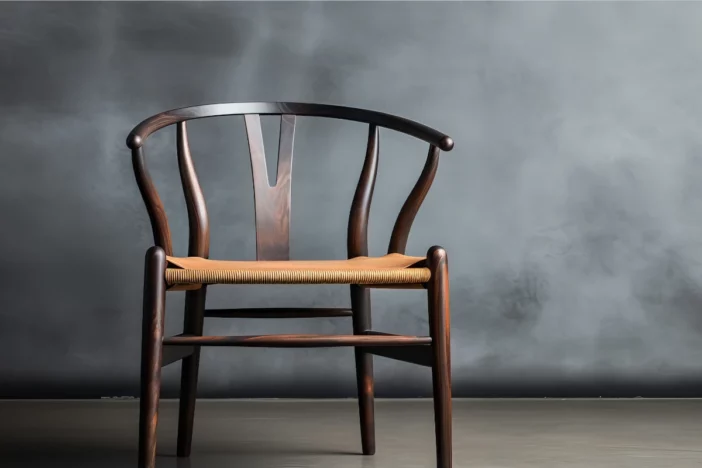
The third section of this extensive catalog of design styles is dominated by themes originating in the United Kingdom.
Danish
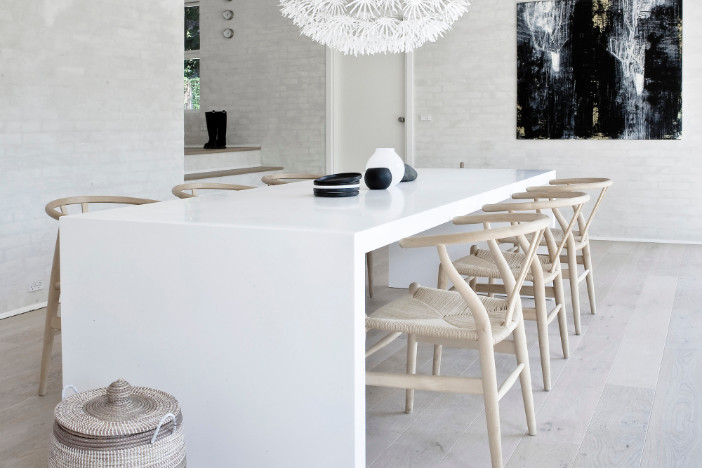
Danish design is rooted in functionality, simplicity and a deep appreciation for craftsmanship. As a cornerstone of Scandinavian style, it blends modernist ideals with cozy minimalism, creating spaces that feel airy, purposeful and calm.
Form is everything in Danish design. Furniture features clean lines, organic shapes and balanced proportions with a focus on usability over ornamentation. Materials are natural and high quality. Light woods like oak, ash and beech are common, along with leather, wool and linen for texture and warmth. The palette is soft and neutral with whites, grays and beiges forming the base. Bold colors are introduced sparingly, often through artwork, cushions or upholstery in mustard, teal or burnt orange.
Iconic furniture pieces include Arne Jacobsen’s Egg Chair and Swan Chair, Hans Wegner’s Wishbone Chair and Børge Mogensen’s functional wooden cabinetry. These designs reflect the Danish principle of “form follows function” and are prized for their longevity and timeless appeal.
Lighting plays a vital role, especially given Denmark’s long, dark winters. Sleek pendant lamps, floor lamps with sculptural bases and table lamps with minimalist shades help create a bright, inviting atmosphere. Designers like Poul Henningsen and Verner Panton elevated lighting to an art form with pieces that are both practical and striking.
Danish interiors are never cluttered. Instead, every object is carefully chosen, creating a harmonious space that feels effortless yet intentional. The result is a home that’s livable, stylish and distinctly Nordic.
Directoire
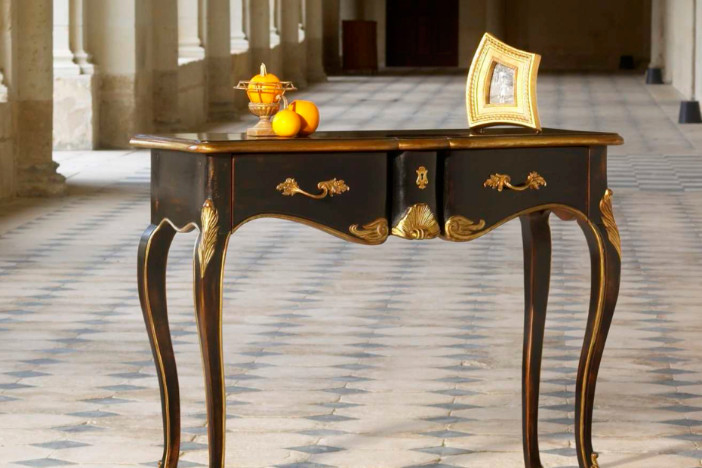
Directoire emerged in France in the late 18th century, during a politically charged era following the French Revolution. It served as a stylistic bridge between the ornate Louis XVI period and the grandeur of Empire design. Influenced by Greek and Roman classicism, Directoire style brought a more restrained, elegant sensibility to interiors. It reflected the shift from aristocratic opulence to republican ideals.
Furniture is refined and linear with a focus on symmetry and proportion. Ornamental details are pared down with marquetry and gilding used sparingly. Carvings often feature classical motifs. Griffins, laurel wreaths, lyres and Greek caryatids replace the royal emblems seen in earlier periods. Forms like the Grecian daybed or recamier, with its rolled arms and low profile, became iconic. Chairs with curved backs and splayed, saber-like legs were insired by the ancient klismos chair.
Materials include fruitwoods like cherry and mahogany, which are often left in their natural tone or lightly polished. Upholstery is simple but refined. Fine cotton, wool or silk is used in muted tones such as dove gray, ivory and faded green. Occasional touches of black lacquer or bronze hardware add contrast.
Lighting is formal but less extravagant than earlier styles. Bronze or brass chandeliers, oil lamps and neoclassical sconces feature delicate detailing like acanthus leaves or urn-shaped bases.
Designers like Georges Jacob and Henri Jacob helped shape this style with their simplified yet dignified approach to form and ornament. Directoire interiors feel timeless, intelligent and gracefully understated.
Dutch Renaissance
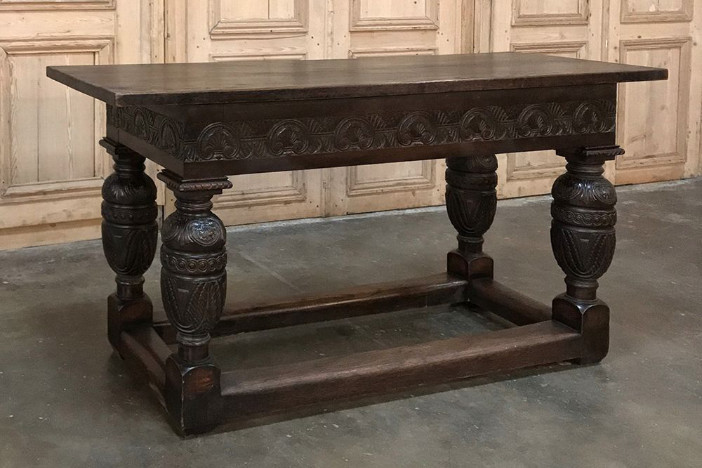
Dutch Renaissance style flourished in the 16th and early 17th centuries. It blends the structure and order of Renaissance principles with the rich, grounded sensibility of the Low Countries. It emphasizes symmetry, proportion and craftsmanship but with a more organic and earthy feel than its Italian counterpart.
Color palettes are moody and dramatic. Deep browns, forest green, charcoal and oxblood are balanced by cool white plaster walls and natural light. Interiors often feel grounded and substantial with heavy woodwork and restrained ornamentation that highlights texture and form over flashy decoration.
Furniture is robust and finely crafted, typically made of dark-stained oak. Iconic pieces include large wardrobes, carved armoires, refectory dining tables and high-backed chairs with turned or spiral legs. Decorative carving features scrolls, foliage, and biblical or pastoral scenes, drawing on traditional Dutch motifs. The bulbous leg, or bolpoot, is a hallmark of the style and adds sculptural weight to tables and chairs.
Textiles such as wool, linen and velvet are used in muted patterns or solid tones, and often accented by hand-embroidered details. Stone or brick floors, wrought iron chandeliers and fireplace surrounds further anchor the space in durability and heritage.
Arabesque patterns of swirling vines and leaves often appear in lighting, tilework or decorative metal elements. While few individual furniture designers from this period are well-documented, the influence of Dutch joinery and guild craftsmanship is unmistakable. The result is a style that feels strong, balanced and historically rich, yet deeply connected to the everyday life of its era.
Eclectic
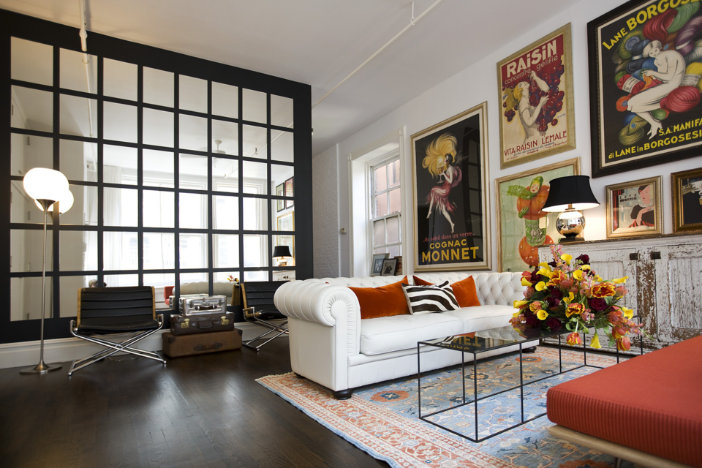
Eclectic interior design is all about mixing and layering styles, eras and influences to create a space that feels collected rather than coordinated. It draws from sources like vintage, modern, industrial, bohemian and global design. The aesthetic blends them into one cohesive and highly personalized look.
Form varies widely. Curved lines may sit alongside angular silhouettes and ornate antique pieces might share space with minimalist furniture. Materials and textures are intentionally mixed. You might see a velvet armchair next to a glass coffee table, a weathered wood console paired with chrome accents or a Moroccan rug beneath a sleek leather sofa. Woven textiles, metals, ceramics and natural fibers all play a part in creating depth and contrast.
Color palettes can be bold or subdued but successful eclectic design usually includes a unifying element. A repeated color, shape or material helps tie the variety together and prevents the space from feeling chaotic. Layers of accessories, such as artwork, vases, books and textiles add warmth and personality.
Eclectic design doesn’t rely on a single set of iconic pieces but mid-century furnishings like the Eames Lounge Chair or vintage industrial lighting are often mixed in. Designers known for mastering this look include Kelly Wearstler and Jonathan Adler, who embrace fearless combinations with refined intention.
What makes eclectic style truly work is the balance. It’s curated, not cluttered. Every piece tells a story and together they create a space that feels vibrant, lived-in and uniquely yours.
Egyptian
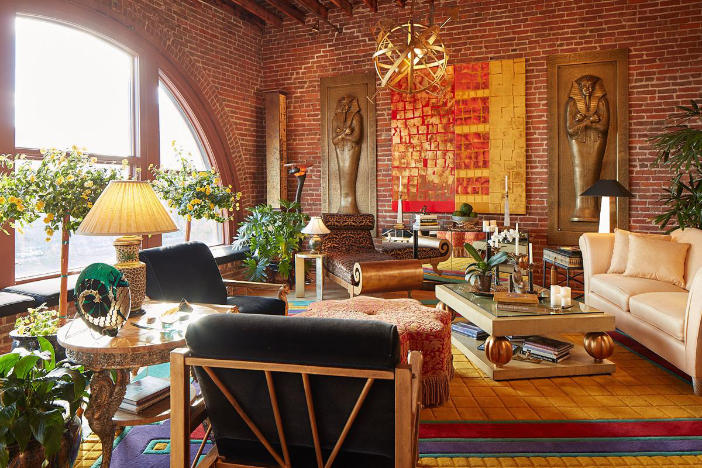
Egyptian design draws from one of the world’s oldest civilizations, blending opulence with symmetry, symbolism and craftsmanship. Rooted in both ancient traditions and modern interpretations, the style is marked by bold geometry, rich colors and a deep connection to mythology and nature.
Forms are structured and balanced. Rectilinear furniture, massive columns and repeating motifs like the ankh, scarab and lotus flower create a sense of order and timeless grandeur. Textures range from smooth and polished, like alabaster and granite to natural finishes found in papyrus, reed and handwoven textiles.
The color palette is rich and symbolic: gold evokes divinity and power, deep blue represents the Nile and the heavens and terra cotta, black and jade green mirror the natural landscape. These tones are often offset by neutral backgrounds like whitewashed plaster or sandy beige stone.
Furniture is low-slung and angular. It’s often made of dark wood such as ebony or cedar. Iconic pieces include carved stools, boxy chairs with lion’s paw feet and inlaid chests. Decorative accents include ornate mirrors, canopic jars and painted murals depicting pharaohs, deities and everyday life. Gilded elements and mother-of-pearl inlays add a luxurious touch.
Lighting tends to be atmospheric. Lanterns, torch-style sconces and candlelight echo the glow of ancient oil lamps. While not associated with a single modern designer, firms specializing in historical revival or museum-quality interiors often reference Egyptian motifs for dramatic, transportive spaces.
Egyptian design is regal yet grounded, offering a bold, historic look that feels both ancient and enduring.
Elizabethan
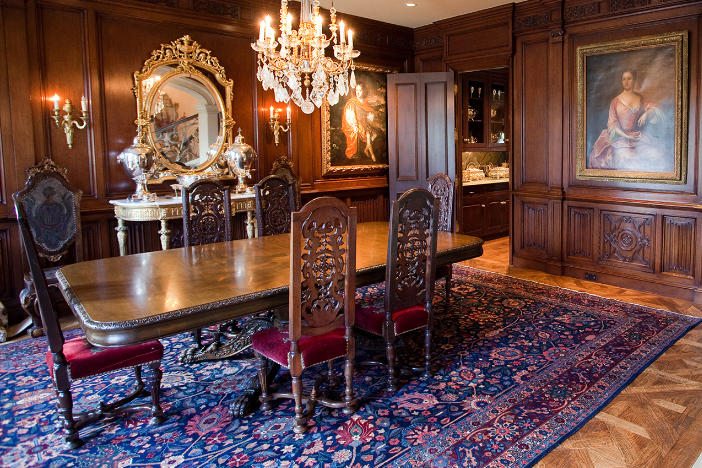
Elizabethan style, which flourished during the reign of Queen Elizabeth I in the late 16th century, is grand, richly detailed and deeply rooted in English tradition. Interiors reflect the wealth and power of the era, showcasing craftsmanship through bold architectural features and opulent decor.
Natural wood plays a dominant role. Dark oak is used extensively in ceiling beams, paneled walls and heavy furniture. Geometric woodwork, including diamond-patterned ceilings and intricate moldings, adds a sense of formality and depth. Walls are dressed with richly woven tapestries, floral murals or painted friezes, while moulded plaster ceilings introduce texture and drama overhead.
Color palettes are warm and moody, filled with deep reds, forest greens, golds and earth tones. Textiles such as velvet, damask and embroidery add luxury and softness to the otherwise solid, architectural interiors.
Flooring often features black and white checkered marble or stone tiles in a nod to the era’s love of high contrast and symmetry. Transom and oriel windows are classic elements, allowing natural light to filter through and balance the darker materials inside.
Furniture is large, formal and often sculptural. Iconic pieces include wainscot chairs, long refectory tables and four-poster beds. All of these are marked by ornate carvings, turned legs and upholstered seats. Bulbous forms and detailed joinery are common.
While individual designers weren’t commonly credited at the time, the legacy of master craftsmen and guild-trained artisans is clear. Elizabethan design is regal and textural, offering a dramatic blend of structure, ornament and historical richness.
Empire
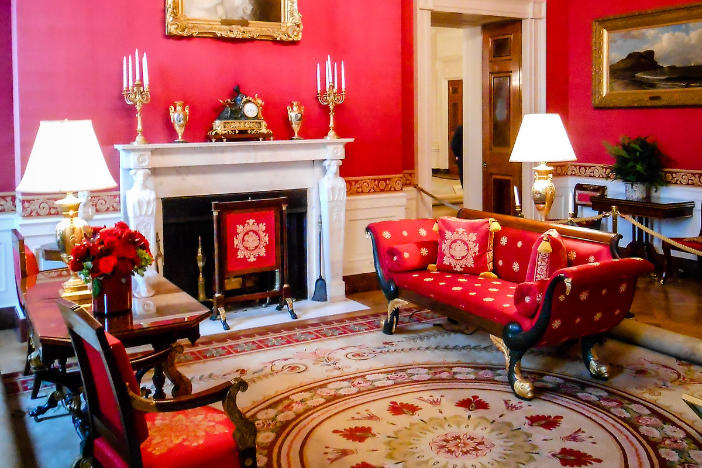
The Empire aesthetic, born in early 19th-century Napoleonic France, is the pinnacle of Neoclassical grandeur. It expanded on the more restrained Directoire style with a renewed emphasis on imperial splendor, drawing inspiration from ancient Rome, Greece and Egypt. This bold and stately look soon influenced design across Europe and the U.S., shaping styles like German Biedermeier and American Federal.
Furniture is massive and commanding, built with precise symmetry and rich detailing. Mahogany is the wood of choice, often finished with high-gloss veneers or accented with elaborate gilded bronze (ormolu) mounts. Iconic motifs include eagles, laurel wreaths, stars, acanthus leaves and mythological figures. Egyptian elements, such as sphinxes, obelisks, scarabs and pyramids, are also prominent in carvings, inlays and ornamentation.
Chairs and sofas are broad with curved arms, low backs and fiddle-shaped splats. Upholstery features opulent materials like silk, brocade and velvet in deep jewel tones. Feet are often carved animal paws and hardware includes glass pulls and intricate gilt mounts. Decorative details are never excessive but always purposeful. They underscore the authority and sophistication of the space.
Architectural features like paneled walls, ornate cornices and egg-and-dart moldings are common. Rooms often have bold, individualized color schemes like crimson, emerald, navy or gold (e.g. Red Room in the Whitehouse). These palettes are balanced by lighter tones and classical symmetry.
In the U.S., designers like Duncan Phyfe and Charles-Honore Lannuier translated the Empire aesthetic into a refined, American context. Empire style is unapologetically grand, rooted in history and designed to impress with every detail.
English
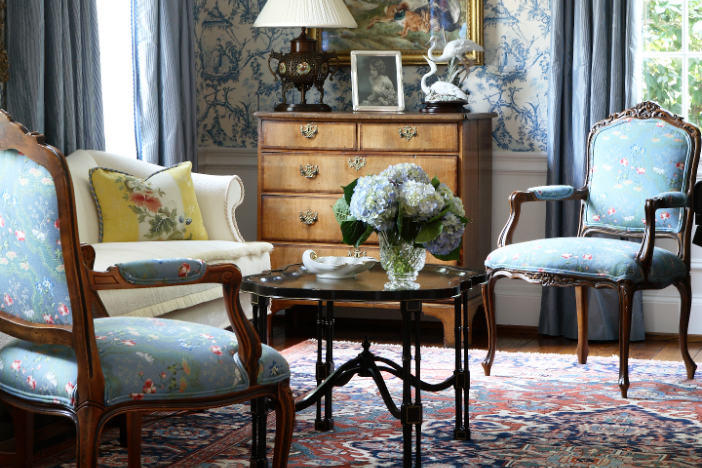
English design is rooted in tradition, comfort and timeless elegance. Whether in a countryside manor or a cozy city flat, the style strikes a balance between refined formality and inviting warmth.
Furnishings are often crafted from rich woods like mahogany, walnut or oak with glossy finishes and detailed carvings. Four-poster beds, clawfoot tables and Queen Anne chairs are signature pieces. They offer a nod to the past without feeling overly ornate. Chesterfield sofas are also an enduring icon, known for their tufted backs, rolled arms and deep leather or velvet upholstery.
Textiles are a defining element. Floral chintz, damask and tapestry patterns are used for floor-length drapes, cushions and slipcovers. Throw pillows and needlepoint footstools enhance the lived-in charm. Walls may be adorned with wainscoting, framed botanical prints or gilt-framed oil portraits. Built-in bookcases and writing desks reflect the English love of reading and quiet leisure.
Color palettes tend to be soft and muted with warm neutrals like cream, taupe and sage paired with pale pinks, dusty blues or deep burgundy. These tones create a harmonious, layered look that feels both timeless and personal.
Designers such as David Hicks and Nancy Lancaster helped shape the evolution of English interiors. They blend classical sensibilities with a relaxed, livable feel. The result is a style that never chases trends—comfortable, cultivated and always charming.
English Country
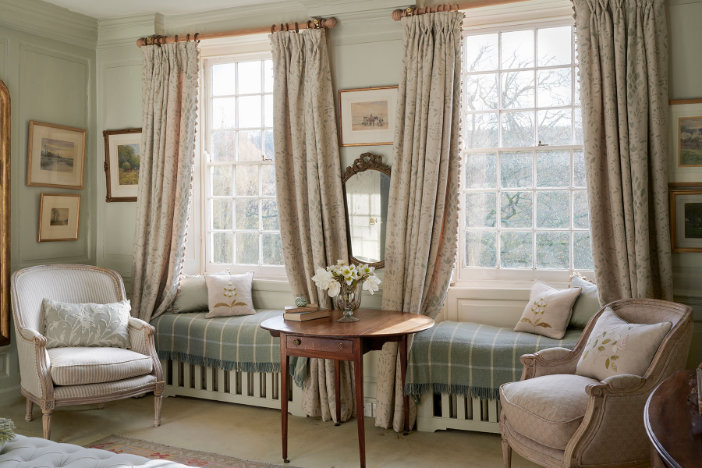
English country is all about comfort, character and lived-in charm. Rooted in rural traditions, it blends elegance with rustic appeal, creating spaces that feel collected, not curated. The look is layered and relaxed, filled with warmth and personality.
Furniture tends to be traditional and well-crafted. Pieces feature turned wood legs, rolled arms and skirted upholstery. Slipcovered sofas and deep armchairs are upholstered in classic patterns like florals, stripes and tartans. Chintz, toile and faded cotton prints appear on everything from curtains and cushions to wallpaper and lampshades. Painted furniture is common and often includes stenciled or distressed finishes that show age and use in a good way.
Color palettes are warm and welcoming, built around heritage shades of sage green, dusty rose, cornflower blue and soft gold. These colors are often repeated in layers of textiles, rugs and painted cabinetry. Textures play a key role. Natural wood, wool, linen and aged brass all contribute to the homey feel.
Antiques and vintage finds add depth and authenticity. Accessories like brass candlesticks, ceramic pitchers, woven baskets and botanical prints help create a space that feels storied. Potted plants, fresh flowers and even herbs on the windowsill bring the outdoors in.
Designers like Sibyl Colefax and John Fowler helped define the English country style. They championed rooms that feel timeless, relaxed and deeply personal. It’s a look that values charm over perfection and celebrates the beauty of a well-loved home.
European
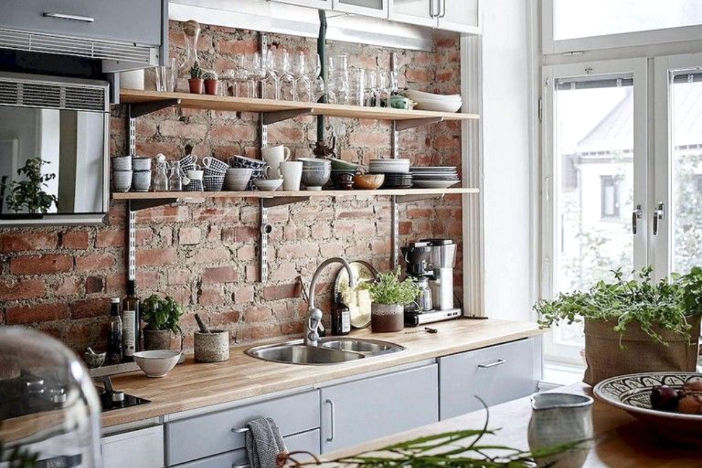
European style blends old-world elegance with modern practicality. The aesthetic draws from a wide range of regional influences across the continent. It’s a sophisticated mix of tradition and innovation, where classic craftsmanship meets streamlined minimalism.
In more traditional European homes, you’ll find furniture with ornate curves, carved details and time-honored materials like walnut, oak and marble. Pieces such as cabriole-leg chairs, clawfoot tubs and pedestal sinks often take center stage. Upholstery leans toward rich fabrics. Velvets, damasks and brocades, featuring scrolled or floral patterns, are rooted in Baroque, Rococo or Neoclassical styles.
In contrast, contemporary European interiors, particularly those influenced by Scandinavian and German design, embrace a less-is-more philosophy. Cabinets and built-ins are sleek, with flat fronts and little to no visible hardware. Function is as important as form, especially in urban apartments where vertical space is carefully maximized.
Color palettes across both styles tend to be muted. Warm neutrals, soft grays and earthy tones allow natural materials to stand out. Wood, stone, plaster and metal finishes are used generously to lend texture and authenticity to each space.
Iconic furniture pieces might include Le Corbusier’s LC2 chair, Arne Jacobsen’s Egg Chair or Mies van der Rohe’s Barcelona Chair. Each piece a symbol of Europe’s lasting influence on design. Designers like Philippe Starck, Jean-Michel Frank and Patricia Urquiola have carried this legacy forward, shaping interiors that feel refined, layered and effortlessly livable.
Exploration
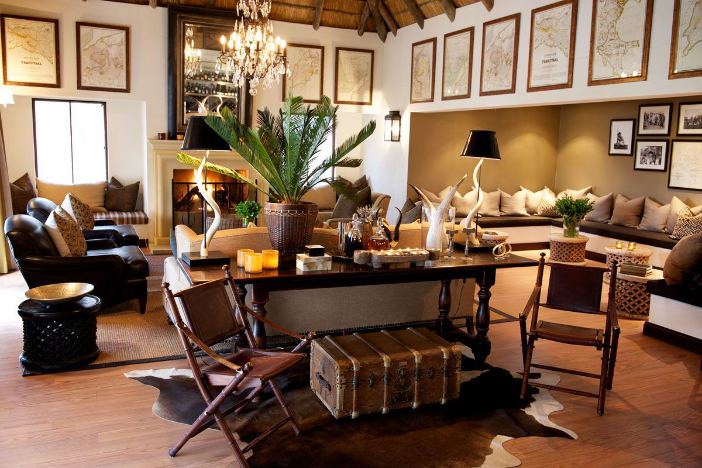
Exploration interior design celebrates the spirit of adventure and discovery. It’s closely linked to British Colonial aesthetics but with a distinct focus on travel and mobility. Inspired by campaign furniture favored by 18th- and 19th-century military officers, pieces like folding desks, collapsible chairs and modular storage units are designed for easy transport. These furnishings often feature leather straps, brass rivets and sturdy wood construction. They combine practicality with rugged elegance.
Textures are rich and tactile with worn leather, aged wood and brass accents dominating the palette. Color schemes lean toward warm earth tones. Deep browns, olive greens, muted tans and navy blues evoke vintage maps and well-traveled trunks. Natural fibers like jute rugs and linen upholstery add an organic touch.
Decor plays a key role in setting the mood. Antique globes, framed nautical charts and old-world maps are essential and are often displayed as focal points on walls or tables. Vintage suitcases and travel trunks from the Belle Époque era serve as both storage and statement pieces. Clusters of postcards and travel ephemera create personalized galleries that tell stories of far-off places.
Iconic furniture includes campaign chests and portable writing desks, designed by makers like Thomas Sheraton who elevated functional travel pieces into refined craftsmanship. Exploration interiors combine utility with nostalgia, offering a timeless, worldly aesthetic that invites curiosity and a sense of journey in every corner.
Guide Sections
References
- Miller, J. (2005). Furniture. Penguin.

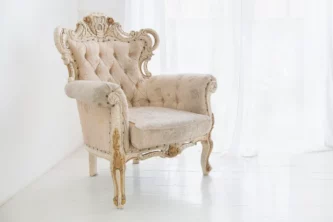
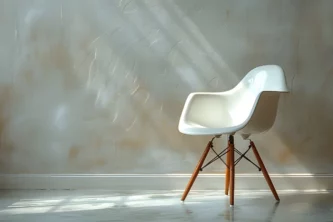
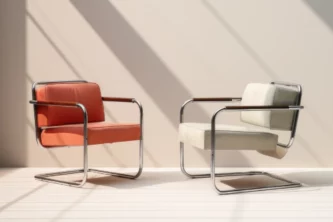
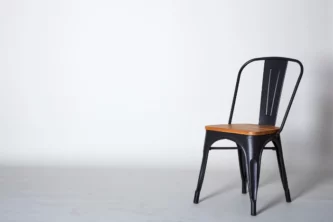
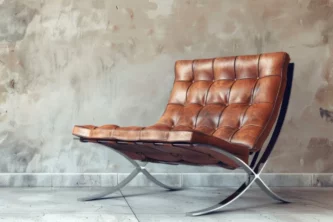
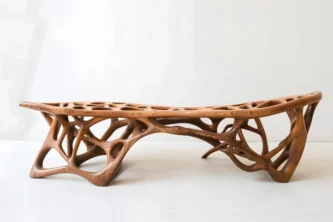
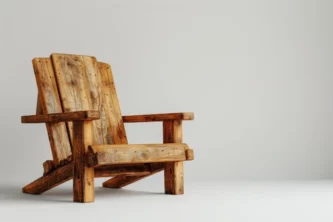
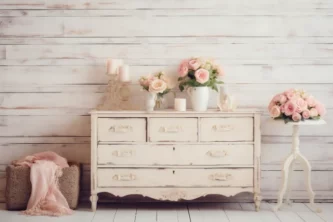
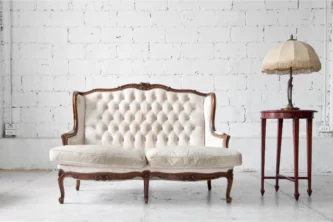




Leave a Reply